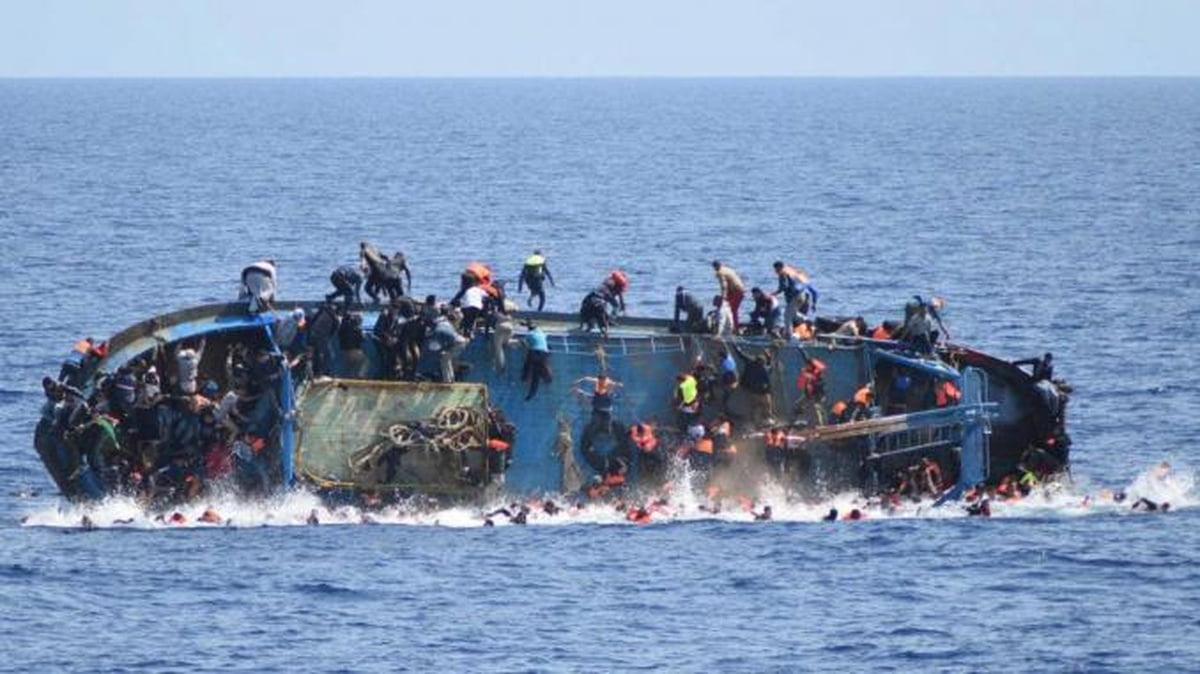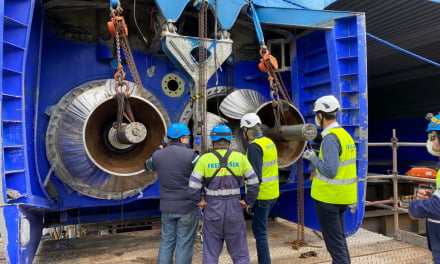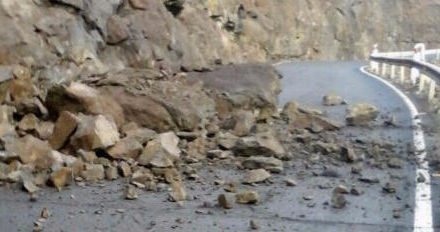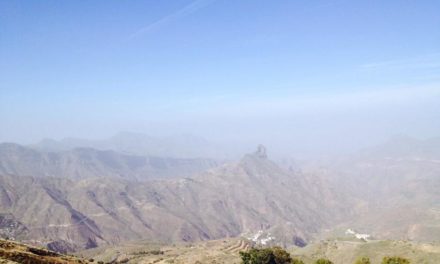 [Patera capsizes (Archive Image), Patera washes ashore (UNHCR)] – Reports estimate up to 50 sub-Saharan migrants drowned this last week, when the boats in which they were travelling towards the Canary Islands were either run aground or broke down. Moroccan authorities found seven bodies, and rescued 40, last Monday, and details started to emerge on Thursday night of a patera or cayuco (open boat) wrecked off the coast of Nouadhibou, Mauritania, where it was thought up to 40 people had perished. Another wreck washed ashore was reported off the coast of Dakhla, Western Sahara, on Wednesday leaving at least 10 dead.
[Patera capsizes (Archive Image), Patera washes ashore (UNHCR)] – Reports estimate up to 50 sub-Saharan migrants drowned this last week, when the boats in which they were travelling towards the Canary Islands were either run aground or broke down. Moroccan authorities found seven bodies, and rescued 40, last Monday, and details started to emerge on Thursday night of a patera or cayuco (open boat) wrecked off the coast of Nouadhibou, Mauritania, where it was thought up to 40 people had perished. Another wreck washed ashore was reported off the coast of Dakhla, Western Sahara, on Wednesday leaving at least 10 dead.
The Atlantic route is the most dangerous of those used by migrants trying to reach Spain specifically due to its distance, the limited means at the disposal of coast guards and the constantly changing confluence of currents. Last year at least 170 people are known to lost their lives, according to the International Organization for Migration (IOM) and UNHCR, the UN Refugee Agency.
The most deadly of the tragedies came about after an open boat ran out of fuel and was adrift for several days without anyone being able to locate them, explained Mauritanian security sources to Efe, the Spanish news agency. Later, according to these same sources, the occupants decided to jump into the sea and all but one ended up drowning. The tragedy took place in international waters, according to the AFP agency. The only survivor was found “by chance” thanks to the Mauritanian authorities off the coast of Nouadhibou.
 The survivor, a Guinean, is now in a hospital in Nouadhibou city being treated for shock and dehydration. He has described how the occupants of the boat had left Morocco and were heading to the islands, but has not been able to confirm a specific date or the number of days they spent on the high seas. The boy claims that he survived because he drank sea water. “Our boat broke down. For a long time we had no help.” said the found man, according to a Mauritanian source quoted by AFP. They spent many days at sea without food or water. Little by little they began to die from dehydration and lack of food, and so bodies were thrown into the sea, before the others attempted to swim to land. “I think they are all dead. I am the only survivor,” he added, estimating that there were at least 27 others including three women and several children.
The survivor, a Guinean, is now in a hospital in Nouadhibou city being treated for shock and dehydration. He has described how the occupants of the boat had left Morocco and were heading to the islands, but has not been able to confirm a specific date or the number of days they spent on the high seas. The boy claims that he survived because he drank sea water. “Our boat broke down. For a long time we had no help.” said the found man, according to a Mauritanian source quoted by AFP. They spent many days at sea without food or water. Little by little they began to die from dehydration and lack of food, and so bodies were thrown into the sea, before the others attempted to swim to land. “I think they are all dead. I am the only survivor,” he added, estimating that there were at least 27 others including three women and several children.
 United Nations Agency for Refugees (UNHCR) Special Envoy for the Central Mediterranean, Vincent Cochetel, lamented the tragedy. Cochetel affirmed that both UNHCR and IOM are working together with local authorities and other partners “to intensify efforts and prevent tragedies like this one.” But traffickers, he added, “continue to lie to their clients.”
United Nations Agency for Refugees (UNHCR) Special Envoy for the Central Mediterranean, Vincent Cochetel, lamented the tragedy. Cochetel affirmed that both UNHCR and IOM are working together with local authorities and other partners “to intensify efforts and prevent tragedies like this one.” But traffickers, he added, “continue to lie to their clients.”
A second boat containing ten corpses, which had also been heading to the Canary Islands, was located on Wednesday by Moroccan fishermen and members of the Moroccan Royal Navy, according to official sources speaking to the Efe agency who said that another ten migrants were rescued alive. These same sources report that the Moroccan authorities continued to mobilise throughout Thursday night in an attempt to find other potential survivors, or find the bodies of at least 13 more people who may have been aboard this boat, which was washed ashore about 20 kilometers southeast of Dakhla.
 Reinforcements to border controls in northern Morocco have been displacing migration routes to the Atlantic coast over the last year or two. In an attempt to avoid being intercepted, migrants are leaving from increasingly distant, more remote regions and are too often left at the mercy of the tides using boats in very poor condition, much of the time without enough fuel and without navigation instruments.
Reinforcements to border controls in northern Morocco have been displacing migration routes to the Atlantic coast over the last year or two. In an attempt to avoid being intercepted, migrants are leaving from increasingly distant, more remote regions and are too often left at the mercy of the tides using boats in very poor condition, much of the time without enough fuel and without navigation instruments.
Statistics from the Spanish Ministry of the Interior have registered the irregular entry of 6,720 immigrants by sea between January 1 and August 2 2020, of which nearly half, 3,269, have arrived by the so-called “Canary route”.
Although Guinea is one of the lowest ranking countries on the Human Development Index (174th out of 189), which reveals its extreme poverty, it is actually one of the richest countries on the African continent. It not only has more than a quarter of the world’s bauxite (aluminium-rich ore) deposits, of which it is the second largest producer in the world, but also gold, iron, diamonds, uranium, copper, manganese, wood, fish and water in abundance. In fact, leading economists speak of the “Guinean paradox” to illustrate how the population of countries with enormous wealth can still live in abject misery. Successive dictatorships since its independence from France in 1958 until 2010, bad governance and unfair exploitation of resources by foreign companies are highlighted as primary causes of the terrible situation in which the country still finds itself. Faced with these issues, serious problems with women’s rights (more than 98% of women suffer FGM) and other civil restrictions such as the outlawing of homosexuality, and police brutality, among many other problems, thousands of Guineans decide to migrate every year. They head first to other African countries seeking opportunities, but in recent years increasingly to Europe through Mali, Algeria, Morocco, Niger and Libya. However, the intensification of surveillance along the Mediterranean coasts, and border closures due to Covid-19 have limited the movements of migrants. The so-called Atlantic or Canary route has been on the rise for at least two years. Last December another tragedy, also in waters near Nouadhibou, cost the lives of a large group of people when the boat in which they were traveling overturned having hit a rock. In this case, the occupants were mostly Gambians and Senegalese who had sailed from Barra, Gambia.
The events of Thursday night brings to three the total ill fated journeys recorded over this last week. Last Monday, Moroccan authorities found another seven bodies and rescued 40 more sub-Saharan migrants who were trying to reach the Canary Islands from the southern town of Tarfaya.
Previous to this week the last known similar tragedy on record, for the Atlantic route to the archipelago, occurred back in December 2019, when at least 60 Gambian migrants are known to have drowned in their attempt to reach the islands after the cayuco in which they were traveling was wrecked. Since 2014, across the various migrant routes, more than 20,000 people are known to have lost their lives trying to reach Europe.














